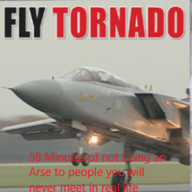Aside: Why do you want ADS-B out and what can't you do without it?
Any Technical Standard Order (e.g. TSO-C145 and later but not TSO-C129) compliant WAAS GPS that outputs ARINC-429 or serial RS-232 can be used.
That includes Garmin GTN or GNS 430W/530W and any NMEA 0183 compliant TSO-C145 GPS. The Skyview system needs an ARINC-429 to Dynon (D9 style) converter box but it allows two ARINC-429 devices to connect.
The statement about the Dynon SV-GPS-2020 ADSB out source not being guaranteed to work in Australia is correct based on Dynon's web based publications. Neither the SV-GPS-2020 or SV-GPS-250 (a cheaper version but still WAAS capable) are TSO'd. This means the yankee doodle IFR pilots can't use it either.
A mode S transponder with no ADSB out will give the plane driver access to Class G and Class D airspace below 10,000 feet (A100 e.g. not yet in a flight level).
These ADSB-Out transponders and the TSO'd GPS source get the plane driver access to everything else (A,B,C and E plus G and D above A100). If this is where you need to fly, say from a Class C airspace then the next time your VH registered VFR day only aircraft needs a replacement transponder it must be mode S (ADS-B capable) but it doesn't need a TSO'd GPS position source to be legal. "No source" would be ok too. I would presume without knowing that you could get away with a non-TSO'd portable WAAS GPS in a VFR aircraft below 250 knots because nobody would notice the difference. There is a loophole about not being able to regulate a device that is not attached permanently to the aircraft.
Aircraft operating under IFR will only gain access to applicable airspace and all aircraft ground movements at Brisbane, Sydney etc (they use surface movement guidance and control) with ADS-B transmitting. This is as of 4 February 2016.
Refer CASA CAO20.18 paragraph 9D.10 and onwards for more details. Note that TSO-C145 means "can do WAAS GPS" but WAAS does not mean "is TSO-C145 compliant". The difference is in the RAIM implementation but specifically the location output reliability. This is about the GPS source not the transponder which falls under a different set of TSO (oh oh) 's.
Seriously, why go down this path?








